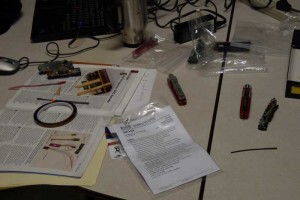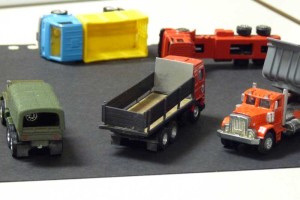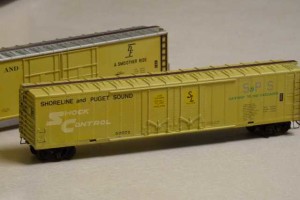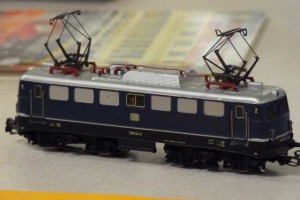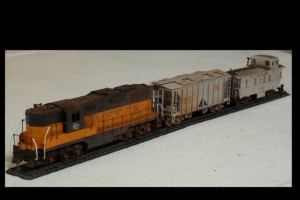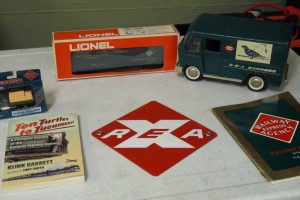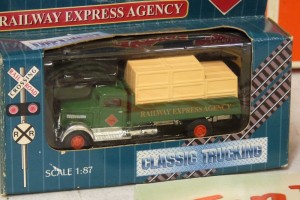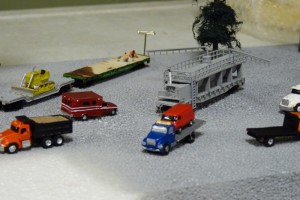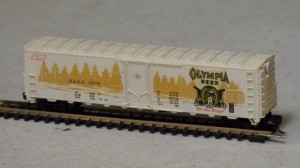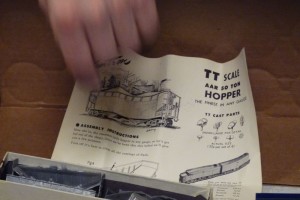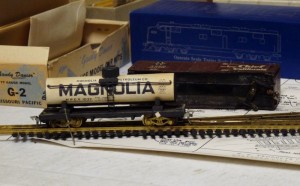By Jeff Moorman
Please join us for our next meeting on Thursday, March 6, 2014. Our guest speaker will be a railroad enthusiast and brass collector.
If you weren’t there for last month’s guest speaker, you missed a very interesting and entertaining evening. Dave Honan is a civil engineer for HDR here in Seattle and he specializes in railroad and transit design in 12 inches to the foot scale. We also discovered he is an excellent railroad photographer and slide show producer.
Dave talked about some projects he’s been involved with which varied from coal hauling railroads across the Great Plains to local transit works. Hearing about everything he has had to deal with was fascinating. He mentioned lots of things I had never considered before. Here are a couple:
When you plan the route of a railroad in varied terrain, not only do you need to look for a pretty steady grade, but you should match the volume of material in cuts to the volume of material used for fills. That cuts down on earth “moving” costs.
Another item of design concerns coping with grades that have curvature. A curve adds drag to the train. So if you have a big curve in the middle of a long grade, when the train rounds that curve it till get harder to pull. The prototype solution is to reduce the grade through the curve, so there is a more consistent drag. For example, consider a long 2% grade with a 90 degree curve in the middle. The basic grade might be designed at 2.25% with a reduction to 1.5% through the curve in order to even out the motive power effort required to get to the top of the hill.
Dave finished out the evening by showing a couple of photo presentations he has done. My favorite included scenes from a narrow gauge peat railroad in Ireland (I think).
For show and tell Dennis T brought along an N scale model of a U-50 locomotive. He had added a decoder to the older loco, which was quite heavy. He said it pulls like gangbusters.
I brought along a kit for the Penryn Fruit Company. This is a small wood HO structure that will be the standard kit for a special contest at the regional convention in June. Everyone in the contest builds the same kit using the same basic rules. You can find out more on the convention’s website – http://www.wnrr.net/PSX2014/contests.html. Now that I have the kit I guess I shall have to build it, especially since it looks pretty straightforward.
We meet at the Ronald United Methodist Church, 17839 Aurora Avenue North, Shoreline, WA. That is on the west side of Aurora (State Route 99) between 175th and 185th Streets and more specifically, between the Cadillac dealer on the south and Deseret Industries to the north. Going southbound on Aurora, make a right-hand turn into the church driveway immediately after passing the Deseret location. The parking lot is at the rear of the church. For regular meetings enter the lower, left side of the church from the rear lot.
Meetings are the first Thursday of each month, September through June. However in June we often do something different, like a layout tour. Doors open around 7:00 PM and the program starts at 7:30.
Remember the next meeting is March 6. The meeting after that is April 3. Hope to see you there or at least sometime on down the line.

